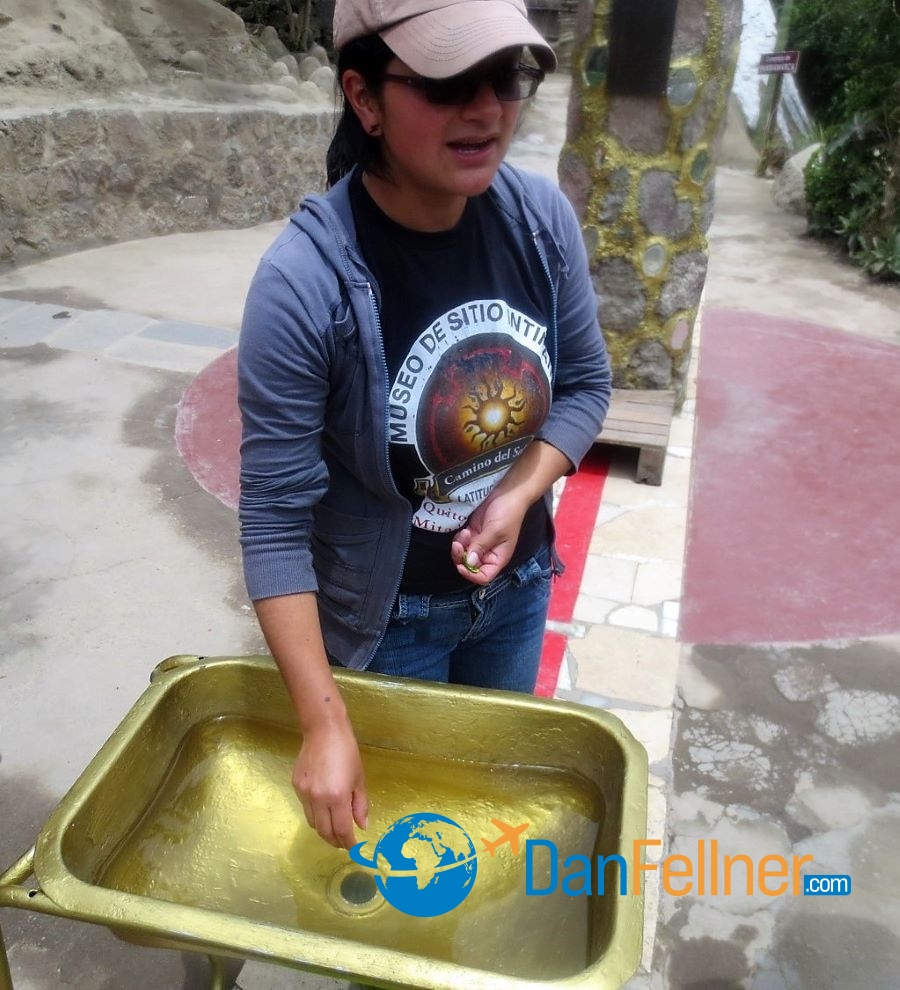Mitad Del Mundo; Quito, Ecuador
Below is one of the most famous tourist attractions in South America. It’s a globe-topped monument called Mitad del Mundo – “middle of the Earth” in English. The yellow line dissecting the complex is supposed to designate the exact spot where the equator passes just a few miles north of Quito, Ecuador. It’s set in a beautiful park in the Andes Mountains and the entrance fee is a bargain — only $2 (Ecuador has adopted the U.S. dollar as its currency).

The Mitad del Mundo monument near Quito, Ecuador. The yellow line is supposed to signify the equator.
Hundreds of tourists visit the monument each day to have their photos taken straddling the yellow line, with one foot in each hemisphere. I did the same.
Actually, though, to quote Conway Twitty, one of my favorite country singers: “It’s only make believe.”
The monument is located at a site where a French scientist in 1736 calculated the equator to be. For the technology of his time period, he did a pretty good job. But with modern GPS technology, we learned a couple of decades ago that he was off by about 600 feet.
But since the monument, museums, restaurants and souvenir shops had already been erected at this location, the Ecuadorean government decided to stick to the party line – literally and figuratively.
The real equator is about a quarter-mile north – or to the right – of where the monument was built. There, the equator is marked with a red line.

The so-called real equator, marked with a red line, is about a quarter-mile from the Mitad del Mundo monument.
To see it, visitors must pay $4 to enter a private attraction called the Intinan Solar Museum. Admission includes a guided tour featuring a number of fun — but fake — science experiments that supposedly demonstrate the powers of the equator’s force.
For instance, our guide set up a portable sink a few feet north of the equator and we watched as the water went down the drain in a counter-clockwise direction. She then moved the sink south of the red line and sure enough, the water drained clockwise. It was more of a magic trick than a bonafide experiment, as scientists long ago debunked the urban myth that water drains in different directions in the Northern and Southern Hemispheres.
And, after further research, I learned that even the newer “real” equator is now believed to be a bit off the mark.
Yellow or red, it was close enough for me. I thoroughly enjoyed my visit to somewhere in the vicinity of the middle of the Earth.

A demonstration involving a portable sink at the red line purports to show the powers of the equator’s force.
Copyright © Dan Fellner 2013



